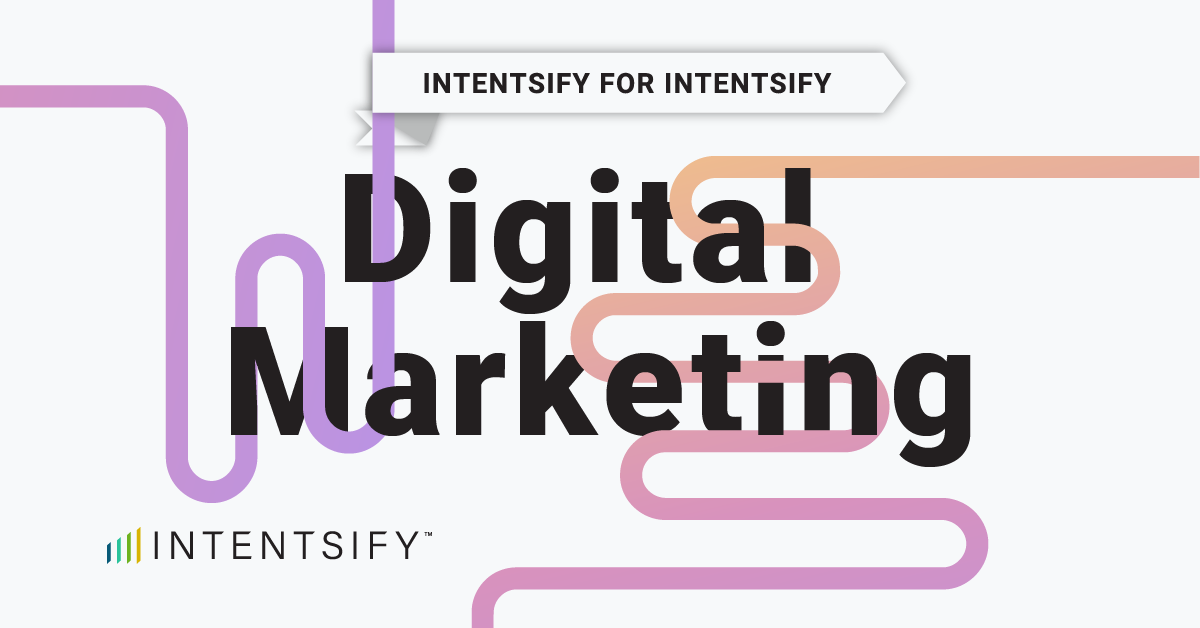Awareness of intent data’s benefits is rapidly increasing among B2B organizations. But being that the tool is still relatively new in the space (and complex), B2B marketers and sellers often require some educational guidance to properly deploy it. Gaining a firm understanding of intent data—including how to use it, what to use it for, and who should use it—is the best way to ensure you activate real results and drive success from your investment.
It’s common to have questions—I know I did when I was first introduced to intent data. And I think it’s safe to assume some of you may have similar queries around intent data when beginning your journey.
From one B2B marketer to the next, here are five previously held assumptions I had about intent data—and why they’re wrong:
Assumption One: You Should Only Leverage One Intent Data Provider/Source
Although intent data providers often “compete” against one another—as if all intent solutions are fundamentally similar and thus interchangeable—the truth is that many differing types of intent data exist. Moreover, each type provides different, meaningful insights, which makes them complementary with one another.
Some intent data types are best for gaining nuanced signals, specific to individual solutions or brands, indicating that an account may be close to buying. For example, tracking intent keywords—a method of assigning intent to an organization based on the keywords located within the copy of pages visited by members of that org—can be customized to identify intent signals to very specific terms and phrases. This helps you understand if a target account is actively researching your solution or solutions like yours, such as your competitors’. Monitoring keywords that are customized to the strengths and weaknesses of your business, and your competitors’ brands/solutions, gives you a more focused, niche picture on who’s in-market to buy.
The problem with keywords, though, is that they don’t ensure the contextual relevance of the content in which the keywords are found. This is why having other intent sources that monitor intent by topics is just as important.
Monitoring intent topics is a method of assigning intent based on the context of a given web page, as identified by natural language processing. Using topics is valuable for preventing “false positive” intent signals that may result from tracking keywords alone.
The best practice is to track both topics and specific keywords. And since most intent data providers only track one type of intent data, it’s optimal to use more than one. By using a combination of intent data feeds, you can layer your findings to highlight the signals being identified by multiple intent sources, which are far more likely to be accurate and actionable. In other words, the more intent sources you use, the more signals you gain, and the more signals you have, the more targeted and effective your marketing and sales efforts will become.
Assumption Two: Intent Data Is Only Used for Account Identification/Prioritization
One of intent data’s biggest use cases is identifying and prioritizing target accounts your organization should focus its resources on. Account prioritization is important, but it would be a mistake to limit the value intent data provides B2B organizations to this one use case.
Intent data has come far in terms of how it can be leveraged. More of its use cases include:
- Digital advertising
- Third-party demand generation (e.g., content syndication)
- Events planning
- Content marketing
- Lead and account scoring
- Sales enablement
- Customer retention and expansion
But its most important value is its ability to enhance nearly all B2B marketing efforts—from top-of-funnel branding campaigns to post-sell customer success initiatives.
Which brings us to…
Assumption Three: Only B2B Marketers Can Leverage Intent
When we think about who uses intent data, the first function that typically comes to mind is B2B marketers, and sometimes B2B sales. We know that intent data gives visibility into accounts who are currently in-market (marketing) and can arm you with the right messaging and content that will most likely resonate and get a prospective account to convert (marketing and sales). But what about what happens after you close the sale?
That’s right; intent data can also be used by customer success (CS) teams! By monitoring research activities of current accounts, it enables CS teams to be more proactive in helping to identify which accounts are most likely to churn and which may be ripe to up- or cross-sell.
For example, if you notice one of your customers is actively researching your competitor with a similar offering, this is your queue to address any existing issues before it’s too late. Because we know that even when we consistently talk to our customers about their satisfaction level, we’re not always going to be informed if they’re actively seeking alternative solutions.
Therefore, not only can intent data save resources when targeting accounts, it can also increase revenue by maximizing retention and preventing accounts from dropping-off. Plus, addressing customer issues early-on strengthens relationships and reflects positively on your overall brand (even if they don’t remain customers).
Assumption Four: All Intent Data Is Derived The Same Way
Initially, I assumed that intent data can only track website visitor activity on your own company website. But then again, what would be the point if you can only derive intel from a source that you should already be tracking?
The beauty of intent data is that it gathers insights across a variety of sources—in myriad ways. Some sources track website visitor activity (first-party intent data), others track social media engagement. Some monitor content consumption among specific web properties, others track intent wherever advertisements are bid on. The list goes on…
Assumption Five: Intent Data Is Difficult to Deploy
Intent data, at first, can seem intimidating and difficult to deploy. Even after implementing your solution, it can be overwhelming to interpret all the insights you’ve gathered and properly act on them.
In fact, the No. 1 challenge marketers face with their intent data investments is “Making intent data actionable” according to a recent TOPO survey and subsequent webinar. And again, with the tool being relatively new to the B2B space, this is unsurprising.
However, turn-key solutions exist that allow marketers and sellers to activate intent data quickly and effectively. Intentsify’s Intent Activation™ programs automate the aggregation and digestion of numerous intent data sources, providing a more holistic and accurate view of target account research activity, before leveraging those intent insights to launch demand generation and programmatic advertising campaigns.
Customer benefits?
- Increased ROI on intent data investments
- Greater marketing efficiency—time, energy and resources are more quickly allocated to the right accounts, using the right messages
- Better prospect experiences, increased engagement, improved engagement quality, higher conversion rates, and greater customer retention and expansion
- A jump in marketing’s contribution to pipeline, and sales’ strengthened confidence in marketing
- More customers and revenue
The promise of intent data is worth the education around it. You don’t have to know every ‘in and out’ to see concrete results from your investment. But by taking the time to ask the important questions first and having a firm grasp on the tool before jumping right in, you’ll better position yourself for intent data success.






